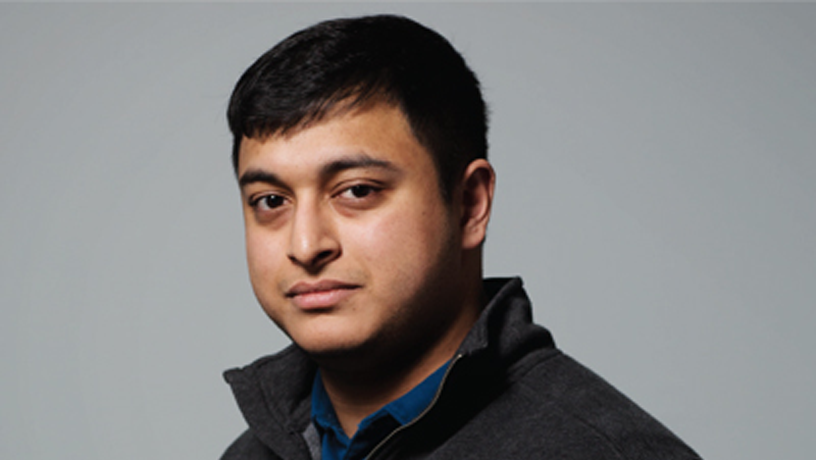Ritish Patnaik, Biomedical Engineering, Senior
There has been one clear consistency through Ritish Patnaik’s goals as they evolve: better the world through science. Initially fascinated with biology, Patnaik identified medical research as a vehicle for affecting change. In high school he pursued his interests with summers in stem cell and cancer research. But he felt something was missing: “I realized that the natural sciences was not the right fit for me because it lacked the creative ‘builder’s mentality’ that I really desire in my career.” Patnaik then discovered biomedical engineering as the perfect solution, an obvious conduit to make an impact while enabling him to have a hands-on approach.
Patnaik formulated what he describes as three core professional tenets as an adolescent. He wanted to work on and direct cutting-edge medical technology with the aim of reducing human suffering; to cultivate a younger generation’s enthusiasm for science and engineering; and to live a fruitful and well-rounded life. He identified academia as the right path and is studying to eventually become a research professor.
Now a senior, Patnaik is working with Associate Professor Sam Sia. In his research with Professor Sia and MD-PhD student Tiffany Guo, Patnaik designed a point-of-care diagnostic device that provides rapid, low-cost anemia and HIV testing for pregnant women living in low-resource areas. The device’s design and preliminary testing results were recently published in the journal Lab on a Chip.
Last fall, Patnaik participated in the Ebola Design Challenge, the student and faculty competition initiated by the deans of Columbia Engineering and the Mailman School of Public Health. It was started in an effort to mobilize the Columbia community to create practical solutions to the Ebola crisis. The dedicated teams worked nonstop to find viable results to help those affected, and the experience only furthered Patnaik’s belief in the importance of a nurturing faculty: “One thing that I really appreciated about the Ebola Design Challenge was the cooperation between faculty and student teams. I was delighted to see the support that Dean Boyce, Professor Sia, Professor Massimino, and Professor Kyle provided our team in a moment’s notice.”
Patnaik understands that the components of his goals—mentoring students and conducting effective research—are very much intertwined. He details with thoughtfulness a future of not only creating additional medical devices for low-resource settings but also embedding a passion for creating health technology in future generations. “By exposing my students to the process of creating medical devices, I hope to inspire them to pursue a career in biomedical engineering and create clinical innovations that change the world,” he says.
“Biomedical Engineering professors have the unique opportunity to teach their graduate and undergraduate students about entrepreneurship, intelligent biodesign, and core principles of academic research while being supported by larger biotechs and research agencies through partnerships and funding,” Patnaik also notes with characteristic collaborative spirit.
Patnaik is armed with a sense of clarity that is doubtlessly one of his great strengths, allowing him to envision simple, tangible solutions to complex problems and act on their execution. He also possesses an innate altruism. And one senses his future students will not resist his infectious enthusiasm.

(Photo by Jeffrey Schifman)
